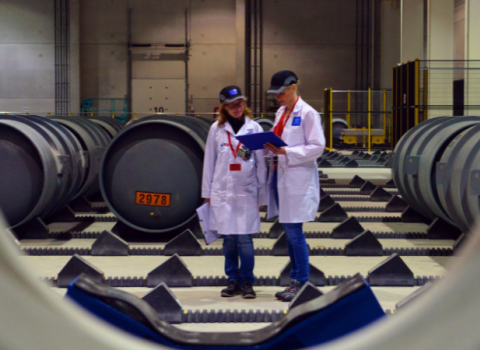Research lead
An international team of scientists coordinated by Huub de Groot, Professor of Chemistry at Leiden University, has resolved the structure of chlorophyll in chlorosomes of green bacteria. Chlorosomes, the light-harvesting antennae of these bacteria, are elongated small pockets which can accommodate up to 250,000 chlorophyll molecules.
De Groot says the structure could inform the development of artificial leaves, a new generations of solar cells. Green bacteria are highly efficient at converting sun light to chemical energy.
The structure of chlorphyll consists of a combination of concentric nanotubes. This produces a robust yet plastic framework for the light-harvesting antennae. The chlorophyll molecules form helices along which energy migration to proteins in the cell membrane occurs where the chemical conversion takes place.
The flexible structure of the chlorosomes provides freedom to vary the dimensions dependent on the intensity of light, so that the bacteria have larger antennae for operation at low light intensity, enabling them to organise chlorophyll in a very heterogeneous manner inside the antennae. This heterogeneity is very effective for the optimum absorption of photons at different wavelengths, the research workers discovered. As a result the bacteria are able to harvest sunlight up to 100 meters deep in the sea.
The reason that chlorosomes are an attractive model for new generation solar conversion devices is that they have a simple composition and work very well at very low light intensity. Green bacteria live under extremely low light intensity, with sometimes only a few photons per chlorophyll molecule per day.





 A unique international forum for public research organisations and companies to connect their external engagement with strategic interests around their R&D system.
A unique international forum for public research organisations and companies to connect their external engagement with strategic interests around their R&D system.